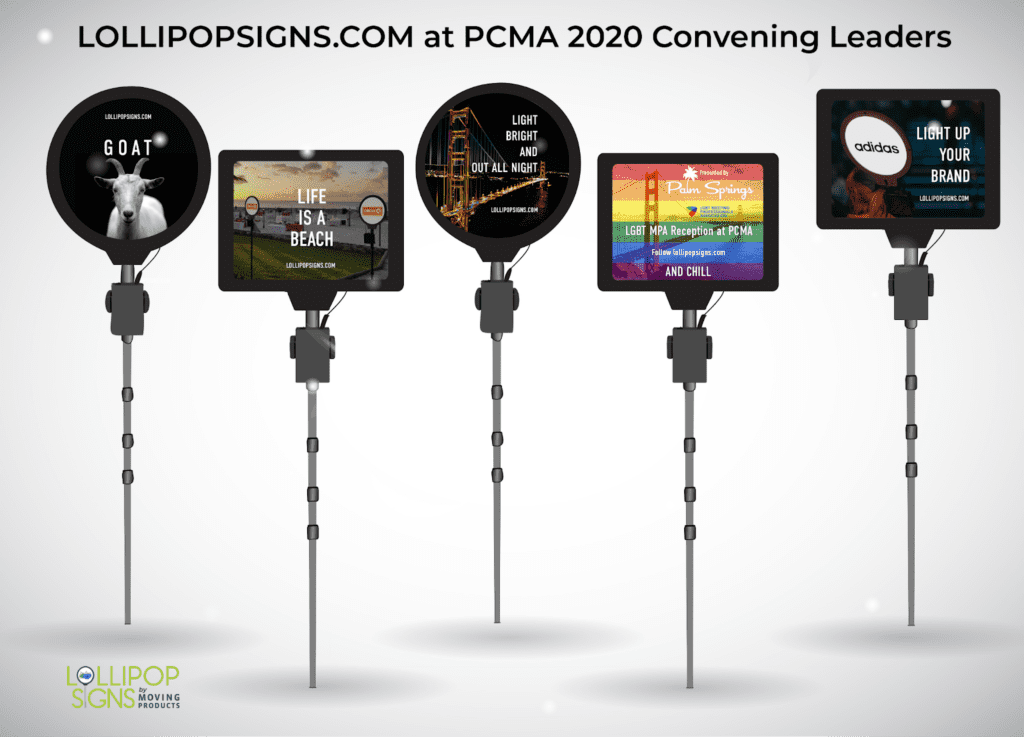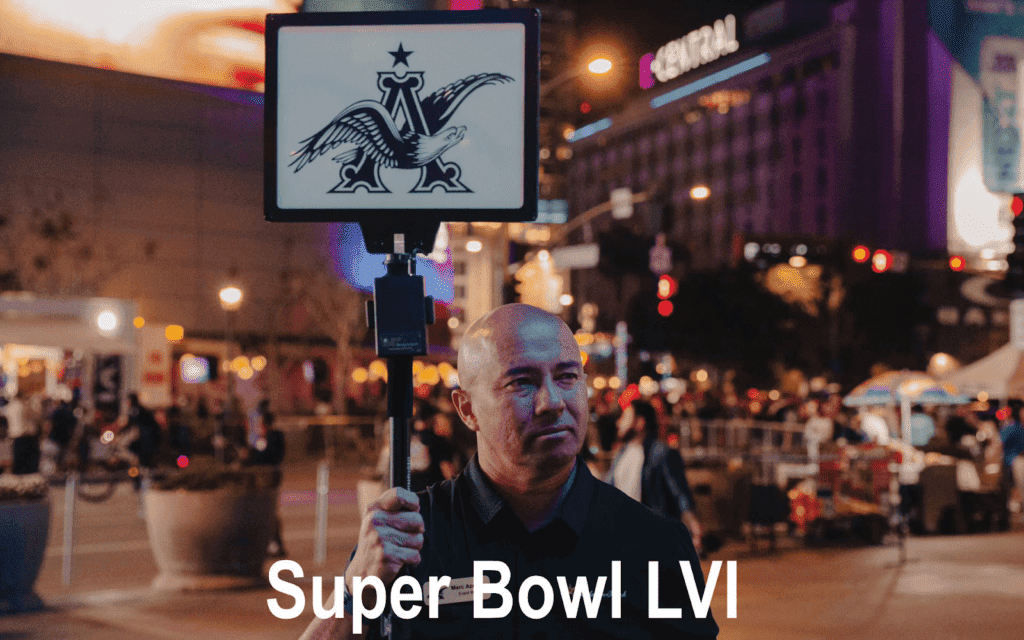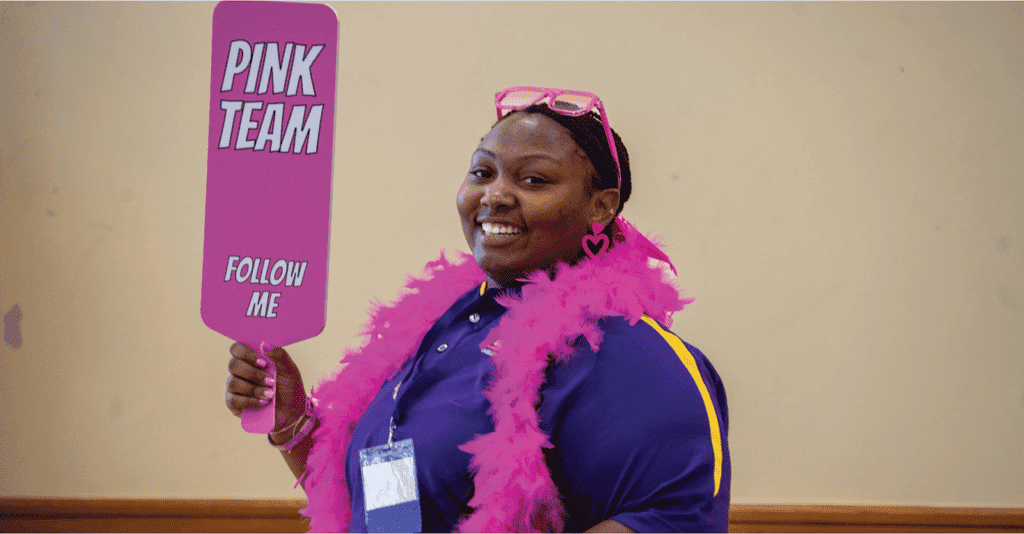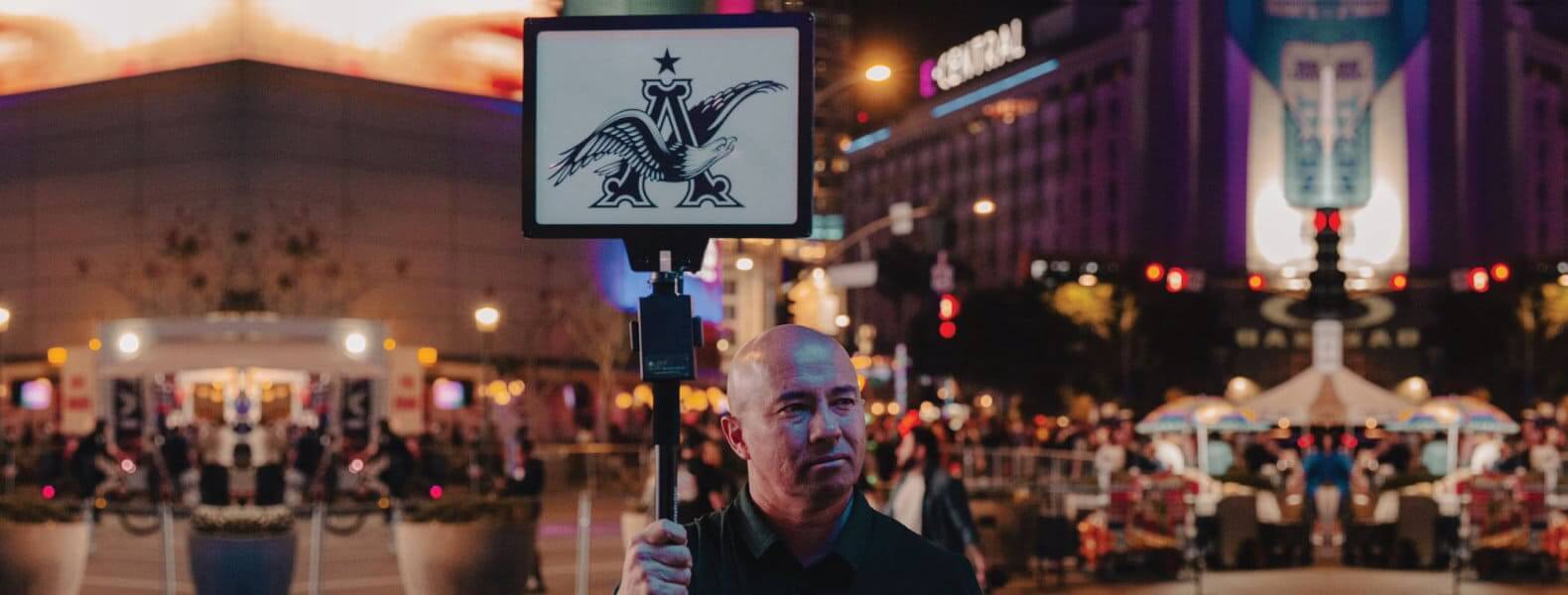Have you ever felt like you’re a character in a rom-com novel, deciphering clues just to find your next session in a sprawling conference space?
You’re not the only one feeling that way! The solution? – it’s well-placed directional signage!
With clear, easily understandable signs at key decision points, you can turn your conference experience from a confusing story into a smooth journey.
The importance of conference directional signs can’t be overstated. These signs serve as our navigational lifelines, guiding us through complex venues and ensuring we reach our intended destinations without unnecessary hassles.
In this guide, you’ll learn why these signs are helpful for navigation and how you use them for your next event.
Types of Conference Directional Signs

Indoor Directional Signs
These signs are best suited for guiding attendees through interior spaces like hallways, rooms, and lobbies. They are also used to point to registration desks, seminar rooms, and amenities like restrooms and dining areas. They can be wall-mounted or freestanding to maximize visibility.
Outdoor Directional Signs
These signs are essential for navigating open-air events, parking lots, and guide attendees to different event locations like stages or exhibit areas. Built to withstand weather conditions, they are a reliable choice for any outdoor event.
Directional Floor Decals
These are great for large halls and open spaces. They can guide attendees without taking up wall space, and they can be customized to fit the event’s theme.
Custom Signs
These are tailor-made to suit specific needs and themes. They offer the most flexibility in terms of design and placement, allowing for a highly personalized attendee experience.
Purposes of Event Signage

Directional Signage
This is the most straightforward type of event signage. It guides attendees from one point to another, often placed at key decision points like intersections or staircases. The aim is to make navigation as effortless as possible.
Location Signage
These signs identify specific rooms, halls, and other areas within the venue. They help attendees make quick decisions about where they need to go!
Activity Signage
Activity signs list the events, seminars, or workshops happening in different rooms or areas. They keep attendees engaged and informed, helping them decide which activities to participate in.
Promotional Opportunities
Brands and sponsors can advertise on these signs, providing an extra revenue stream for event organizers. It’s a win-win situation: brands get visibility, and organizers offset some costs.
Crowd Control
These signs help with managing queues and waiting areas, especially for popular events or activities. They help reduce the risk of overcrowding and ensure that activities start and end on time.
Event Spaces
These signs highlight amenities like restrooms, food courts, and relaxation zones. They enhance the attendee experience by making it easier to find essential services.
Key Features of Effective Conference Directional Signs

Clear and Concise Information
In a busy conference, no one has the time or patience to read a paragraph of text on a sign. The information should be short, sweet, and to the point.
Visibility
A sign that can’t be seen is a sign that can’t guide. Factors like lighting, height, and angle should be considered to ensure that each sign is easily visible from a distance.
Consistency
Having a consistent design throughout helps attendees easily understand and follow signage. A uniform design and colour scheme across all signs can significantly reduce confusion and improve the attendee experience.
Design Considerations for Conference Directional Signs
Font Style and Size
The font should be easily readable from a distance. Avoid cursive or overly artistic fonts that might look good but are hard to read quickly.
Colour Scheme
The colours should be easy on the eyes and consistent with the event’s branding. Contrasting colours can make the text stand out, improving readability.
Symbols and Icons
Using symbols that everyone knows and understands can make it super easy for people to get what the sign is saying, really quickly!
For instance, a restroom symbol can instantly guide attendees to the nearest facilities, while a first aid cross can quickly direct people to medical assistance.
Placement Strategies for Conference Directional Signs
Key Decision Points
Signs should be placed at points where attendees will need to make decisions, such as turns or intersections. This helps them navigate without second-guessing.
Eye-Level Placement
For optimal visibility, signs should be placed at eye level. This makes them easy to spot and read, reducing the likelihood of attendees missing them.
Intersections and Entrances/Exits
These are critical points where signs are most needed. They guide attendees as they enter or leave different areas, helping to direct flow efficiently.
Long Distances or Complex Routes
For particularly long or complicated routes, additional signs may be necessary. These can provide reassurance that attendees are on the right path, reducing anxiety and improving their experience.
Elevate Your Event Experience with Conference Directional Signs
Conference directional signs are not just pointers; they are essential tools for creating a successful, safe, and efficient event. Investing in well-designed and well-placed signage can make all the difference in how your event is perceived and experienced.
So, the next time you’re planning an event, give the humble directional sign your attention. It might just be the key to your event’s success!
FAQs
How to choose the right directional signs?
When choosing directional signs, consider factors like visibility, simplicity, and quality. The signs should be easily seen, understood, and durable enough to last the duration of the event.
What are 4 types of wayfinding signs?
The four types of signs for wayfinding are:
- Identification Signs: These label specific rooms and areas, helping attendees know where they are.
- Direction Signs: These use arrows or symbols to guide attendees to various locations within the venue.
- Information Signs: These offer essential details, such as event schedules, to keep attendees informed.
- Regulatory Signs: These set forth rules and guidelines, often using universally recognized symbols for quick understanding.
Why Use Directional Signs at Conferences?
Directional signs at conferences are essential for managing crowd flow and enhancing attendee experience. They act as the “traffic control” of the event, guiding people through various halls and rooms, thereby reducing confusion and aimless wandering.
Beyond navigation, these signs also contribute to safety by clearly marking exits and emergency routes.


